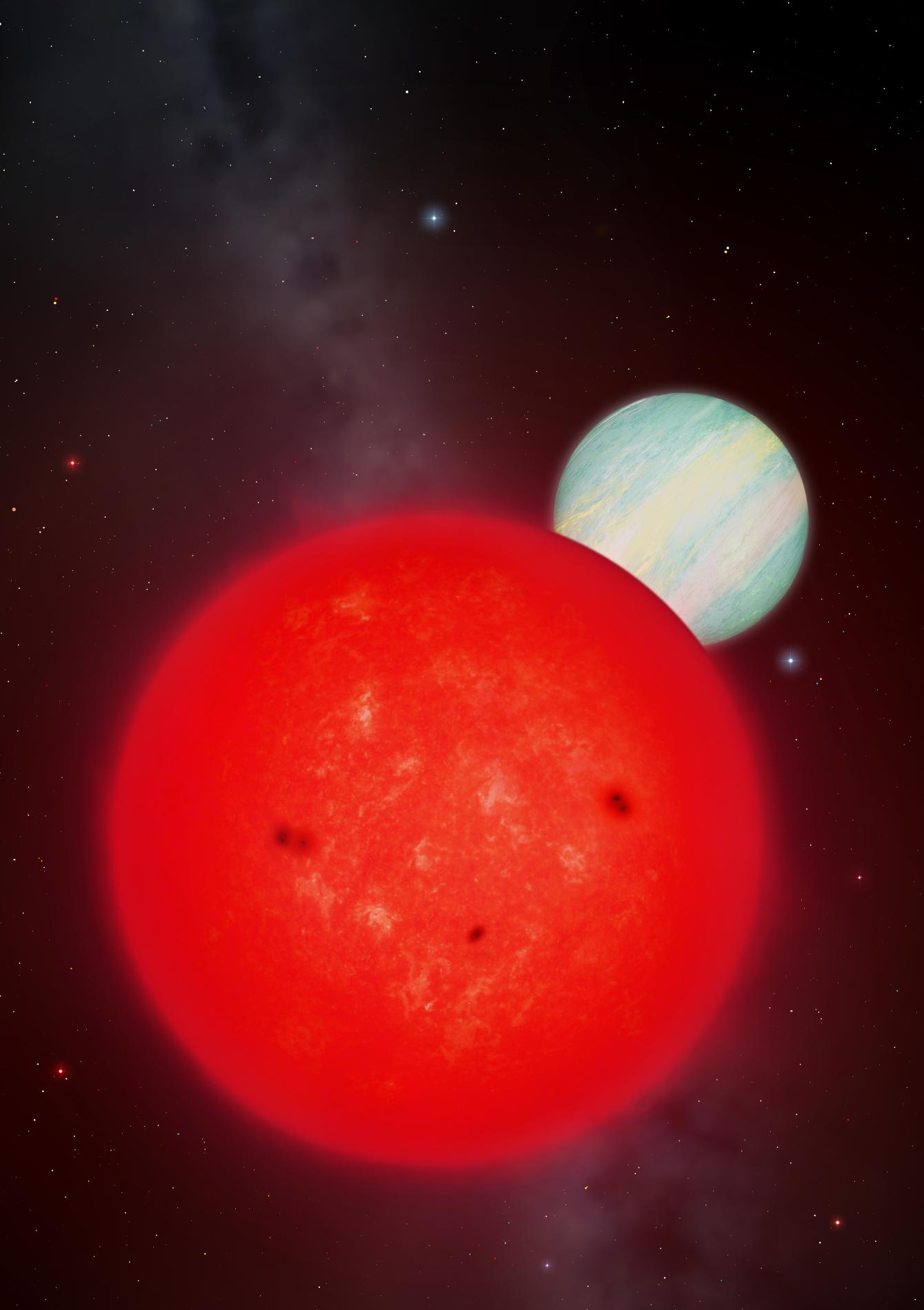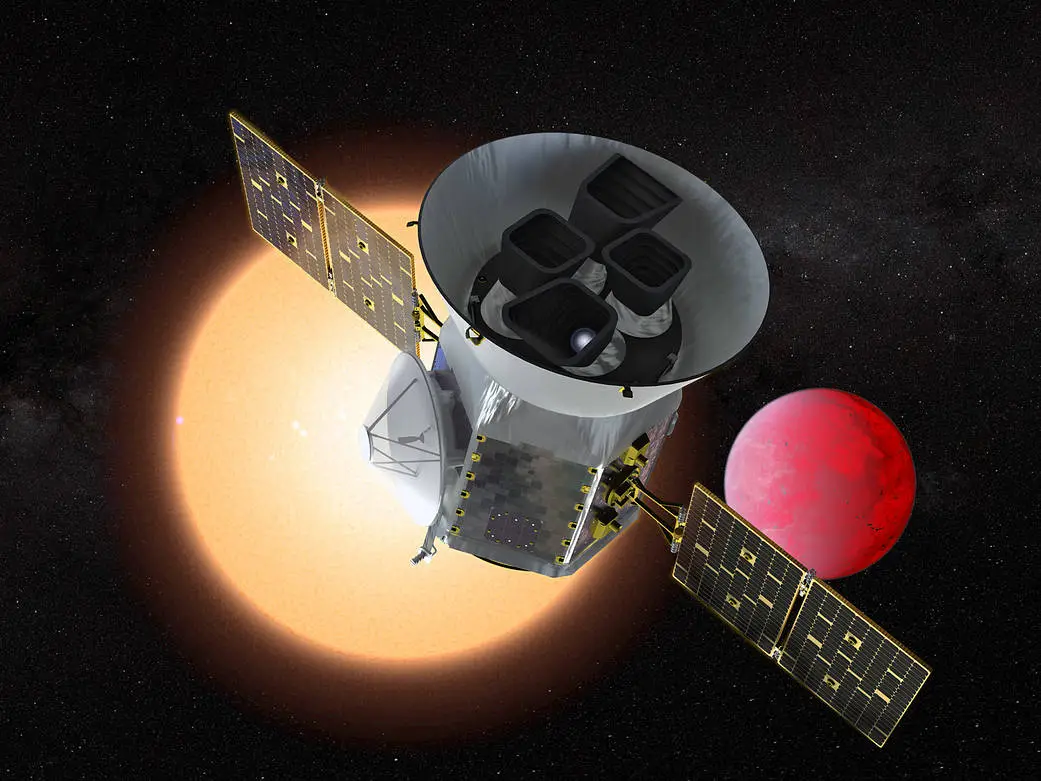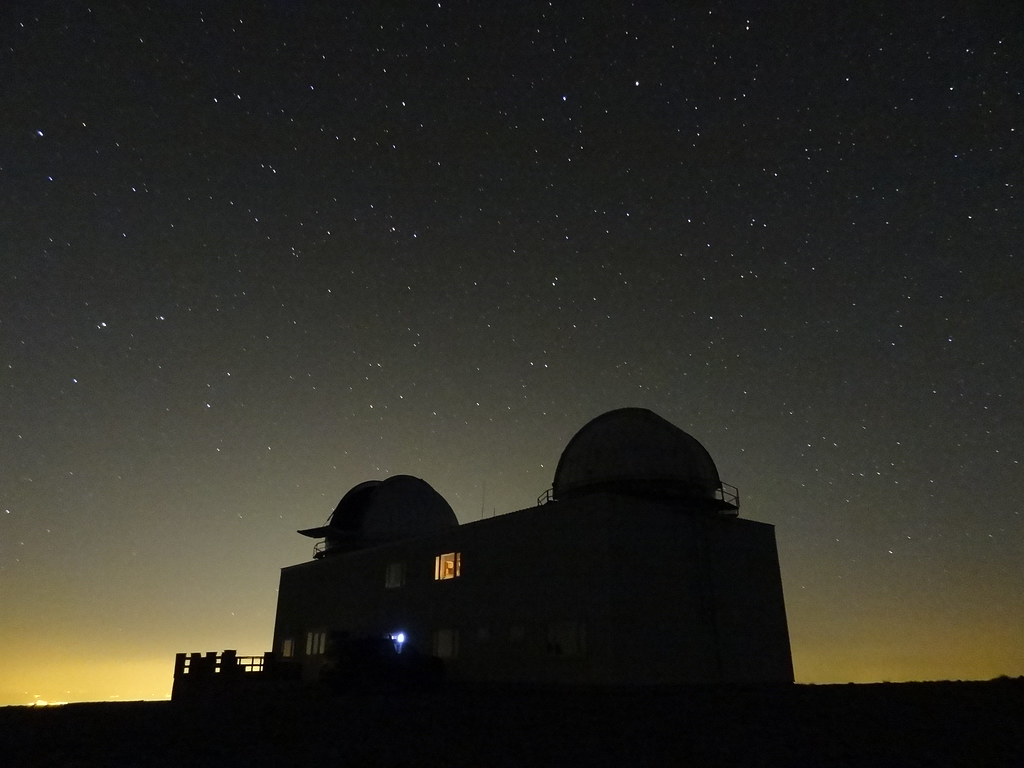Discovery of a giant planet around a tiny star challenges theories of planet formation
The Instituto de Astrofísica de Andalucía (IAA-CSIC) participated in the discovery through key observations with the 1.5-meter telescope at the Sierra Nevada Observatory (OSN), which confirmed the existence of the giant planet
The finding contradicts current theories on the formation of giant planets and opens a promising path for future research
Planets are born from the material surrounding young stars, in what is known as a protoplanetary disk. If the dust and gas in this disk clump together and accumulate enough mass, they can give rise to giant planets. However, this process heavily depends on the star’s mass: the smaller the star, the less material is available to form large planets.
This is why the recent discovery of a giant exoplanet orbiting a tiny star is so surprising: TOI-6894, a red dwarf with only 20% of the Sun’s mass. This discovery, published in Nature Astronomy, challenges current theories on planet formation and raises new questions about how and where giant planets can form. “What’s remarkable is that, according to current theories, such small stars shouldn’t have such large planets because there simply wouldn’t be enough surrounding material to form them,” says Francisco J. Pozuelos, a researcher at the Instituto de Astrofísica de Andalucía (IAA-CSIC) and co-author of the study.

Artist's impression of the exoplanet TOI-6894b orbiting its small, cool host star. Credits: University of Warwick/Mark Garlick
TOI-6894b is a low-density gas giant with a radius slightly larger than Saturn’s but only half its mass. Its host star, TOI-6894, is the lowest-mass star known to host a transiting giant planet, measuring just 60% the size of the next smallest known star with a similar planet.
The discovery is part of a large-scale research project analyzing data from NASA’s TESS (Transiting Exoplanet Survey Satellite) mission, which searches for giant planets around low-mass stars. “We analyzed observations of over 91,000 low-mass red dwarfs in the TESS data looking for giant planets,” explains Dr. Edward Bryant, astrophysicist and lead author of the study.

Artist's rendering of the Transiting Exoplanet Survey Satellite (TESS). Credits: NASA’s Goddard Space Flight Center
The Instituto de Astrofísica de Andalucía (IAA-CSIC) played a significant role in analyzing the data obtained by the TESS space mission. “We were able to detect that this planet’s transit —that is, its passage in front of the star— blocks 17% of its light, which is uncommon and will allow us to study its atmosphere with great precision,” says Francisco J. Pozuelos (IAA-CSIC). This clue marked the starting point for the entire observation and analysis campaign that led to the discovery.
In addition, the IAA-CSIC contributed crucial observations from the 1.5-meter telescope at the Sierra Nevada Observatory (OSN), in various light bands and in coordination with other international telescopes. “These observations allowed us to rule out the possibility of an eclipsing binary — a system of two stars orbiting each other and producing mutual eclipses — and to confirm that we were indeed looking at a giant planet,” explains Víctor Casanova, a researcher at the IAA-CSIC.

Night-time image of the Sierra Nevada Observatory. Credit: Alfredo Sota (OSN)
A REVEALING ATMOSPHERE
One of the keys to understanding how TOI-6894b formed lies in the detailed study of its atmosphere. Analyzing how materials are distributed inside the planet can reveal the structure of its core and help determine whether it formed by accretion — gradually accumulating gas and dust — or by gravitational collapse of an unstable disk.
Moreover, its atmosphere presents a rare feature for this type of planet: it is surprisingly cold. While most gas giants discovered so far are so-called “hot Jupiters,” with temperatures between 1000 and 2000 kelvin, TOI-6894b barely reaches 420 kelvin. Its low temperature, along with other peculiarities such as particularly deep transits, makes it one of the most promising candidates for studying cold atmospheres in exoplanets.
“Given the irradiation it receives from its star, the atmosphere of TOI-6894b is expected to be dominated by methane-related chemical processes, which is quite unusual,” notes Professor Amaury Triaud of the University of Birmingham. Francisco J. Pozuelos (IAA-CSIC) adds: “These low temperatures make it possible to detect not only methane but even ammonia, which would be a milestone — this compound has never been observed in an exoplanet’s atmosphere.” TOI-6894b thus stands out as a reference planet for studying methane-dominated atmospheres and one of the best natural laboratories for exploring carbon-, nitrogen-, and oxygen-rich atmospheres beyond the Solar System.
Thanks to all these unique features, TOI-6894b has been selected for future observations with the James Webb Space Telescope (JWST), scheduled for the coming months. “These data will allow us to test the different theories about its formation and, more broadly, advance our understanding of how giant planets form in extreme environments,” concludes Pozuelos.
- 'A transiting giant planet in orbit around a 0.2-solar-mass host star'
- https://www.nature.com/articles/s41550-025-02552-4
- Francisco J. Pozuelos - pozuelos@iaa.es
- Instituto de Astrofísica de Andalucía (IAA-CSIC)
- Unidad de Divulgación y Comunicación
- Amanda López – alm@iaa.es
- Emilio García – garcia@iaa.es - 649 407 445 (vía whatssap)
- Celia Navas - navas@iaa.es
- https://www.iaa.csic.es
- https://divulgacion.iaa.csic.es

